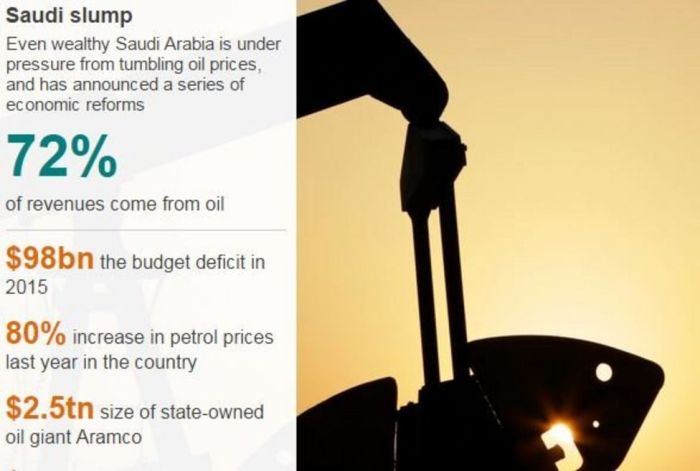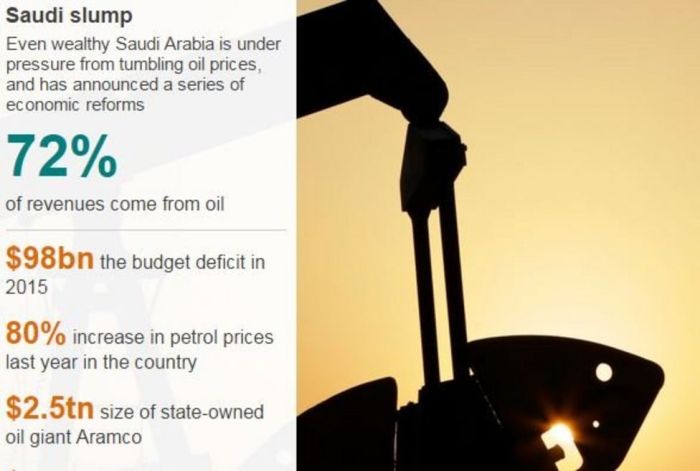
Oil Prices Dip Despite OPEC Efforts to Restrain Supply
Oil prices dip despite OPEC efforts to restrain supply, a perplexing situation that has sparked widespread debate among market analysts and energy experts. The recent decline in oil prices comes as a surprise, given OPEC’s concerted efforts to reduce production and stabilize the market.
This unexpected turn of events raises crucial questions about the effectiveness of OPEC’s strategies and the broader forces shaping the global energy landscape.
While OPEC has taken steps to curtail oil production, a confluence of factors has contributed to the price dip. Global economic uncertainties, particularly in major oil-consuming regions, have dampened demand. The rise of alternative energy sources, coupled with the ongoing war in Ukraine, has further added complexity to the market.
These factors have combined to create a delicate balance between supply and demand, ultimately leading to the current downward pressure on oil prices.
OPEC’s Efforts to Restrain Supply: Oil Prices Dip Despite Opec Efforts To Restrain Supply
The Organization of the Petroleum Exporting Countries (OPEC) has been actively working to reduce oil production in an attempt to stabilize and potentially increase oil prices. These efforts have been undertaken in response to various factors influencing the global oil market, including fluctuations in demand, geopolitical tensions, and inventory levels.
The Rationale Behind OPEC’s Decision
OPEC’s decision to restrain supply is driven by a desire to maintain a balance between supply and demand, ensuring a stable and profitable market for its member nations.
- Global Demand:As the world recovers from the COVID-19 pandemic, oil demand has been steadily increasing, particularly in regions like Asia. OPEC aims to ensure that production levels remain in line with this rising demand, preventing a potential supply shortage and subsequent price spikes.
- Geopolitical Tensions:Geopolitical instability, such as the ongoing conflict in Ukraine, can disrupt oil production and transportation, leading to supply disruptions and price volatility. OPEC seeks to mitigate these risks by maintaining sufficient reserves and influencing market stability.
- Inventory Levels:Maintaining adequate oil inventory levels is crucial for ensuring a consistent supply and preventing price fluctuations. By reducing production, OPEC aims to manage global inventory levels, preventing shortages and price shocks.
Comparison to Previous Efforts
OPEC’s current production cuts are part of a long-standing strategy to influence oil prices.
- Past Efforts:In the past, OPEC has implemented production cuts and agreements to address market imbalances. For instance, the “OPEC+ agreement” involving OPEC and non-OPEC producers, including Russia, has been instrumental in stabilizing prices during periods of volatility.
- Effectiveness:The effectiveness of these efforts has varied depending on factors such as global economic conditions, alternative energy sources, and geopolitical events. While OPEC’s actions have often influenced oil prices, other factors can also play a significant role.
Factors Contributing to the Price Dip

Despite OPEC’s efforts to curb production and stabilize the market, oil prices have recently dipped. Several factors have contributed to this decline, reflecting a complex interplay of global economic conditions, energy trends, and geopolitical events.
Global Economic Slowdown
The global economic outlook has cast a shadow over oil demand. Major economies, including the United States and China, are grappling with inflation and slowing growth. Consumer spending is being impacted, leading to a decrease in fuel consumption.
- The International Monetary Fund (IMF) has revised its global growth forecast downwards, citing concerns about persistent inflation and tighter monetary policies.
- The manufacturing sector in China, a major oil consumer, has shown signs of weakness, reflecting the impact of COVID-19 lockdowns and broader economic headwinds.
Growth of Renewable Energy
The increasing adoption of renewable energy sources, such as solar and wind power, is gradually reducing the reliance on fossil fuels. This trend is putting downward pressure on oil demand in the long term.
- Many countries are setting ambitious targets for renewable energy deployment, driven by environmental concerns and energy security considerations.
- Technological advancements in renewable energy technologies are making them more cost-effective and accessible, further accelerating their adoption.
Geopolitical Uncertainty
Geopolitical events, such as the ongoing war in Ukraine, have created volatility in oil markets. While the war initially triggered price spikes due to concerns about supply disruptions, the impact on demand has also been significant.
- The war has led to economic sanctions on Russia, a major oil exporter, and disrupted energy flows.
- The conflict has also triggered a global energy crisis, with countries scrambling to secure alternative sources of supply, contributing to price fluctuations.
Market Outlook and Potential Scenarios
The recent dip in oil prices, despite OPEC’s efforts to restrain supply, has sparked considerable debate about the future trajectory of the global energy market. This price fluctuation is a result of complex interplay between global economic growth, geopolitical tensions, and evolving energy consumption patterns.
This section delves into the potential implications of this price dip, exploring various scenarios for oil prices in the near and long term.
Implications for the Global Energy Market
The current oil price dip could have significant implications for the global energy market. Lower oil prices could lead to increased demand, particularly in sectors like transportation and manufacturing. This increased demand could potentially offset the impact of OPEC’s production cuts and lead to a more balanced market.
However, it could also incentivize increased investment in fossil fuel extraction, potentially exacerbating climate change concerns.
It’s a strange time in the market. Oil prices are dipping despite OPEC’s efforts to restrain supply, and now we’re seeing reports of missing deposits at Wells Fargo. If you’re a Wells Fargo customer and find yourself in this situation, be sure to check out this helpful article on how to address the issue and protect your finances.
It seems like we’re all facing a bit of economic uncertainty these days, so it’s more important than ever to stay informed and take steps to safeguard our financial well-being.
Potential Scenarios for Oil Prices
The future trajectory of oil prices depends on a complex interplay of factors, including:* OPEC policy:OPEC’s decision to cut production aims to stabilize prices, but the effectiveness of this strategy remains uncertain. If OPEC maintains its production cuts, prices could stabilize or even rise.
However, if OPEC eases production cuts or member countries deviate from agreed quotas, prices could decline further.
Global economic growth Strong economic growth in major oil-consuming countries like China and India could drive up demand and support higher oil prices. Conversely, a global economic slowdown could lead to decreased demand and downward pressure on prices.
Geopolitical developments Geopolitical tensions, such as those in the Middle East or Ukraine, can significantly impact oil prices. Conflicts or sanctions can disrupt supply chains and lead to price volatility.These factors suggest several potential scenarios for oil prices in the near and long term:* Scenario 1: Price Stabilization:If OPEC maintains its production cuts, global economic growth remains robust, and geopolitical tensions ease, oil prices could stabilize at a relatively higher level.
This scenario would benefit oil-producing countries but could also lead to increased investment in fossil fuel exploration and production, potentially exacerbating climate change concerns.
Scenario 2
Gradual Price Decline:
Scenario 3
It’s interesting to see how oil prices are dipping despite OPEC’s efforts to restrain supply. This might be because younger investors, like those described in this article about Gen Z investors seeking growth with Nvidia, Tesla, and Lennar emerging as top stock picks , are more focused on tech and growth sectors.
This shift in investment focus could be contributing to the recent downward trend in oil prices, as investors allocate their capital elsewhere.
Price Volatility:
Consequences for Oil-Producing Countries
Sustained low oil prices could have significant consequences for oil-producing countries and their economies. * Reduced Revenue:Lower oil prices translate into reduced revenue for oil-exporting countries, potentially leading to budget deficits, currency devaluation, and economic instability.
Fiscal Challenges Governments in oil-producing countries may need to implement austerity measures, reduce public spending, or raise taxes to compensate for lost oil revenue. This could lead to social unrest and political instability.
Investment Uncertainty Low oil prices can discourage investment in the oil and gas sector, potentially leading to job losses and economic stagnation in oil-producing regions.
It’s a curious thing, watching oil prices dip despite OPEC’s efforts to restrain supply. It makes you wonder what other factors are at play. The upcoming economic indicators, like inflation and jobs data, are definitely in focus, as they often have a significant impact on the global market.
Check out this article for more on those indicators. Ultimately, the interplay between supply and demand, coupled with these macroeconomic factors, will likely determine the direction of oil prices in the coming weeks.
Impact on Alternative Energy Sources
Sustained low oil prices could have mixed effects on the development and adoption of alternative energy sources. * Reduced Incentive:Low oil prices could reduce the economic incentive to invest in renewable energy technologies, as they remain more expensive than fossil fuels in many cases.
Increased Competition However, low oil prices could also increase competition in the energy sector, potentially leading to innovation and cost reductions in renewable energy technologies.
Impact on Consumers and Businesses
The recent dip in oil prices, despite OPEC’s efforts to restrain supply, has a significant impact on both consumers and businesses. Lower oil prices translate to more affordable gasoline and other energy products for consumers, while businesses benefit from reduced transportation and manufacturing costs.
However, the impact varies across different sectors and industries.
Impact on Consumers
Lower oil prices directly translate into lower gasoline prices, making it more affordable for consumers to commute, travel, and engage in leisure activities. This increased purchasing power can have a positive ripple effect on the economy, as consumers have more disposable income to spend on other goods and services.
Impact on Businesses
Businesses across various sectors benefit from lower oil prices, as it reduces their operational costs.
- Transportation Costs:Businesses heavily reliant on transportation, such as trucking companies, logistics firms, and airlines, experience reduced fuel expenses, improving their profitability.
- Manufacturing Costs:Lower energy prices reduce manufacturing costs, making goods more affordable for consumers. This can lead to increased production, higher sales, and ultimately, economic growth.
- Energy Expenses:Businesses that consume significant amounts of energy, such as factories, power plants, and data centers, experience lower energy bills, improving their financial performance.
Impact on Oil-Dependent Industries
Industries heavily reliant on oil, such as airlines and shipping companies, experience significant benefits from lower oil prices.
- Airlines:Lower fuel costs for airlines translate into lower ticket prices, potentially attracting more passengers and increasing demand for air travel. This can lead to increased revenue and profitability for airlines.
- Shipping Companies:Shipping companies benefit from lower fuel costs, making it more affordable to transport goods across the globe. This can lead to increased trade and economic activity, as businesses are able to access new markets and expand their operations.
Long-Term Implications for the Oil Industry
The recent dip in oil prices, despite OPEC’s efforts to restrain supply, has significant long-term implications for the oil industry. This downturn could reshape investment decisions, exploration and production activities, and the future of fossil fuels in the global energy mix.
Impact on Investment Decisions
The current price dip may deter investment in new oil and gas projects, particularly in expensive and challenging environments like deepwater drilling or Arctic exploration. This is because lower prices make such projects less financially viable, discouraging companies from committing significant capital.
Exploration and Production Activities, Oil prices dip despite opec efforts to restrain supply
Oil companies may be forced to prioritize existing production over new exploration and development projects. This could lead to a decline in new oil discoveries and a gradual decrease in overall production in the long term.
Future of Fossil Fuels
The oil price dip could accelerate the transition to renewable energy sources. With fossil fuels becoming less attractive due to lower prices and concerns about climate change, investments in renewable energy technologies are likely to increase. This could lead to a gradual decline in the reliance on oil and gas in the global energy mix.
Impact on Oil-Producing Countries
The price dip will impact the competitiveness of different oil-producing countries. Countries with high production costs may face economic challenges, while those with lower production costs may gain a competitive advantage. This could lead to shifts in global oil production and influence the economic strategies of oil-producing nations.






